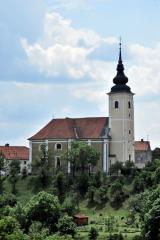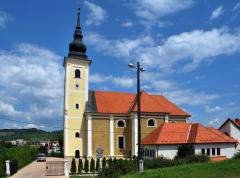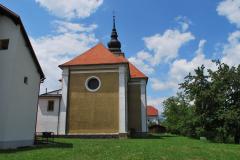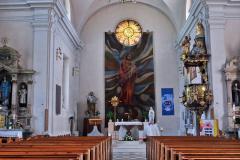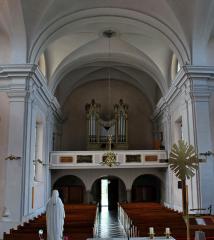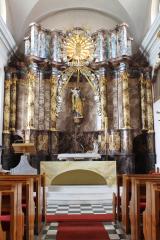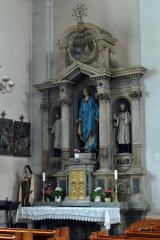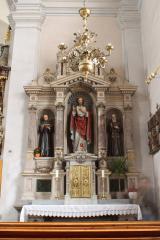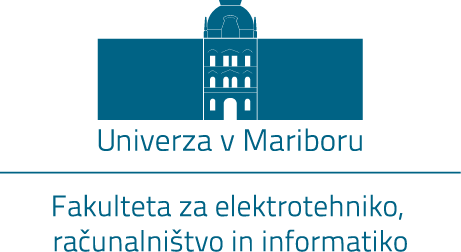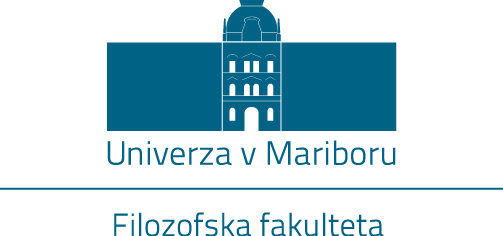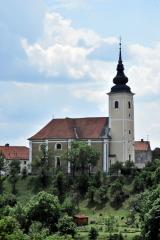
THE PARISH CHURCH OF ST. JOSEPH
Location: Ob izvirkih 5
Architect: Matija Hoffer (?) / Anton Hain (?) / Andreas Stengg (attributed) (church), Johann Nepomuk Fuchs (sacristy)
Time of construction: 1726-1728 (church), 1743 (bell tower), 1764 (sacristy)
At first, the pilgrim's Church of St. Joseph in Studenci was a succursal church of the Limbuš parish. In 1788, it became part of the then founded subsidiary parish of Maribor 13 St. Magdalene, which became an independent parish in 1864. In 1897, the Vincentians (Congregation of the Mission) took care of the church and built their house beside it. However, in 1911, they moved away from Studenci, supposedly because they were not able to cope with the complicated Slovene-German relations in the Railway colony; allegedly, they also had financial trouble. After a short break, during which the church was again managed by the secular priests from St. Magdalene Parish, the Capuchins moved to St. Joseph in 1920. They still manage the church today. An independent parish was established on 1 April 1940; the Capuchin monastery was built beside the church in 1985.
Because of its pilgrim character, the old church, to which archival sources attest that it was being built in 1675 and which was consecrated by the Lavantine Prince Bishop Franz Caspar Count of Stadion (bishop 1673-1704) in 1684, soon became too small. Consequently, between 1726 and 1728, a new church was built in its place. There is no information about the names of the architects or construction engineers in concurrent sources. According to Sergej Vrišer, it is possible that the architect was Matija Hoffer or Anton Hain, while based on a stylistic analysis, Igor Sapač attributed the church to building master Andreas Stengg (1660-1741) from Graz. In 1743, the bell tower was built on the west side of the church; however, the tower's eastern wall was not built. Instead, the tower leaned directly against the façade. Consequently, the tower started to tilt over the years. The sanctuary obtained its current architectural appearance in 1764, when the sacristy with an oratory was built on the southern side of the presbytery. According to archives, Maribor building master Johann Nepomuk Fuchs (1727-1804), who came to Maribor from Silesia, led the works. On 5 July 1766, Prince Archbishop of Gorizia Karel Michael Count of Attems (archbishop 1752-1774) consecrated the expanded and furnished church.
The church, which is oriented to the west, is shaped like a Latin cross. The bell tower that stands in front of the façade is followed by a single-nave with a transept; on the southern side of the presbytery with a rectangular conclusion is a storeyed sacristy with a rectangular ground plan. The exterior is divided by pilasters of the Tuscan order, rectangular and lunette windows, and a circular window on the eastern side of the presbytery. The bell tower has four storeys; on the sides, it is adorned with pilasters of the Tuscan order. The windows on the upper storey are adorned with a rich frame with tassel decorations. The sacristy is articulated by rectangular windows and a rectangular entrance, which is surrounded by a portal with a diversified profiled Baroque pediment. The walls of the interior are divided by double pilasters of the Tuscan order, which support the profiled entablature. Above it rises the barrel vault with spandrels. The individual bays are separated with transverse arches.
In the 1750s and the first half of the 1760s, the church obtained rich new Baroque furnishings (a high altar, the work of Josef Straub, 1750; side altars of the Presentation of the Virgin and St. Andrew, 17601762, and the pulpit made in 1764 by Josef Holzinger), which represented the height of Baroque sculpture in Styria. Unfortunately, when the Vincentians managed the church, these furnishings were removed and, with the exception of the pulpit, replaced with Neo-Renaissance ones, which are of lesser quality (though still solid pieces of work). Fortunately, the majority of Straub's statues from the high altar were preserved and are kept in the Maribor Regional Museum.
The Neo-Renaissance high altar of St. Joseph (1899) was removed in 1972 as part of the post-conciliar rearrangement of the presbytery. It was replaced by modern minimalist furnishings designed by architect Ciril Zazula (1924-1995). In 1978, the altar wall was covered with a tapestry depicting St. Joseph with Child, the work of painter Ida Brišnik-Remec (1941). This quality artwork lessened the void that arose because of the post-conciliar remodelling. The same painter was the author of the model for the stained glass of the circular window on the altar wall. At the beginning of 2014, a replica of Josef Straub's high altar, the work of Miha Legan's restoration workshop, was placed in the presbytery. The replica is professionally unsuitable, since it is mostly based on an unclear black and white photograph from the end of the 19th century and bears a poor resemblance to the original; at the same time, the replica also covered Ida Brišnik-Remec's tapestry. In the niche of the new altar stands the statue of St. Joseph with Child made in 1897 by sculptor Janez Vurnik Jnr (1849-1911) from Radovljica. Between 1897 and 1899, the statue replaced the original painting of the patron saint on Straub's altar; however, it was later placed in the niche of the Neo-Renaissance high altar.
The Neo-Renaissance side altars are dedicated to Our Lady of the Miraculous Medal and the Sacred Heart. The first altar was made in 1904 by stonemason Ignacij Čamernik from Celje, while sculptor Josip Grošelj (1854-1941) from Selce above Škofja Loka provided its sculptural decoration. The other altar was made in 1910 by Maribor stonemason Karel Kocijančič (+1915). The only preserved parts of the original sculptural decoration, which was made by Graz sculptor Eduard Kupowsky (also Kubowski), are the statue of the Sacred Heart and the relief depicting the Saviour and the Souls in Purgatory and St. Andrew. After 2000, the statues of Chinese martyrs St. John Gabriel Perboyre and St. Francis Regis Clet were unnecessarily replaced by statues of a lesser quality portraying the beatified Anton Martin Slomšek and St. Leopold Mandić.
From an art historical perspective, the most important part of the church furnishings is undoubtedly the previously mentioned Baroque pulpit, made by Maribor sculptor Josef Holzinger (1735-1797) in 1764. The fence of the pulpit is decorated with statues representing the Four Continents; among them are reliefs showing the following scenes: Christ among the Doctors, Jesus in a Fish Boat on the Sea of Galilee, Sermon on the Mount and Jesus and the Woman of Samaria. The sculpture of Christ handing over the keys to St. Peter is placed on the sounding board of the pulpit.
Among other furnishings, it is necessary to mention the Stations of the Cross, a carving made in 1903 by Ferdinand Stuflesser Snr (1885-1926) from Gröden in southern Tyrol, and the Baroque tombstones of Wolfgang von Sinersperg (+1698) and Johann Severin Ekhart (1674-1743), two men whose legacies contributed immensely to the construction of the new Baroque church.
Because of its architecture, the church of St. Joseph in Studenci is one of the most important Baroque monuments in Styria. Unfortunately, in the time of Late Historicism, Baroque altars of high quality, which represented the peak of Baroque sculpture in Styria, were removed. Neo-Renaissance side altars are solid pieces of art. They are important from an iconographic, as well as a cultural-historical view, since they attest to the brief presence of Vincentians in Maribor. On the contrary, the interventions in modern times, the "reconstruction" of Josef Straub's altar and the replacement of statues on the altar of the Sacred Heart, are lamentable. On the one hand, they create a false past, while on the other, they negate the presence of Vincentians in Maribor.
Franci Lazarini
(23 September 2014)
